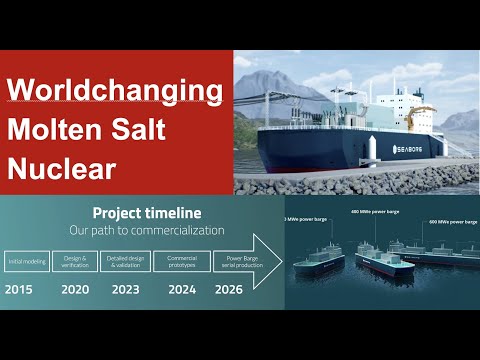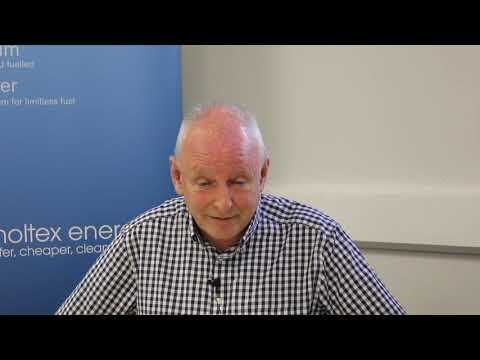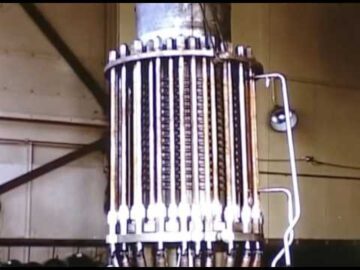I have a farely comprehensive understanding of the huge challenges needed to create commercial nuclear fusion power. This is why I am more optimistic about molten salt nuclear fission. I try to explain this in two videos. However, this is a complex topic. I will try to state this as clearly and briefly as possible here.


How Far Away in Commercial Nuclear Fusion?
I believe technological breakthroughs are still needed. The recent decades of work to nuclear fusion has been dominated by the Tokomak projects (ITER, JET and a south korean Tokomak and a Chinese Tokomak). Tokomak hold nuclear fusion plasma in a donut shape magnetic field. It takes years for the projects to build up to attempts to create fusion for a few seconds and the fusion is roughly 1000X times away from real net energy.
There are many ways of trying to develop nuclear fusion to generate power. A single value starts to tell us how close a fusion experiment is to net power: the fusion triple product. The triple product is the product of three attributes of a fusion plasma:
n the density of ions in the plasma (ions/cubic meter)
T the temperature of those ions (keV2)
τE the energy confinement time (seconds)
The fusion reaction with the lowest (aka most achievable) triple product threshold is the fusion of deuterium and tritium (D-T), two isotopes of hydrogen. A fusion power plant running on D-T fuel will have a triple product of about 5×10^21 m-3 keV s or greater. There are many other requirements for a commercially viable power plant but the triple product is a minimum technical milestone.
A nice property of the triple product is that it’s independent of the particular scheme used to create the fusion plasma so it can be used to compare performance across different kinds of approaches to fusion. It’s a meaningful quantity in magnetic confinement schemes (tokamaks, stellarators), inertial confinement schemes (laser fusion), and magneto-inertial schemes (MagLIF, compression of FRCs).




The multi-billion JET (Joint European Torus) reactor experiment has operated for decades. I think it was at about 100 million euros per year or more for its funding. In March 2019, the UK Government and European Commission signed a contract extension for JET. This guaranteed JET operations until the end of 2024 regardless of Brexit situation. In December 2020, a JET upgrade commenced using tritium, as part of its contribution to ITER. On 21 December 2021, JET produced 59 megajoules using deuterium-tritium fuel while sustaining fusion during a five second pulse, beating its previous record of 21.7 megajoules with Q = 0.33, set in 1997. Steven Krivit points out that it took about 700 megawatts of electricity to produce the 59 megajoules over five seconds. The Q = 0.33 is 33% of the energy in and out of the plasma. 700 megawatts to power this for five seconds would be about 3.5 billion joules to get 59 megajoules out from the plasma. The wall power is about 60 times less and then the power out of the plasma would need to be converted back to electricity. This goes to the more honest figures from LPP fusion. Fusion power experiments are at one thousandsth of a percent in total electricity out versus electricity in.
The world only has 25 tons of Tritium. It does not occur naturally. A D-T (deuterium and tritium) fusion reactor generating a gigawatt would need about 150 tons of Tritium per year. Tritium is currently produced at heavy water CANDU (Canadian) made nuclear fission reactors.
The D-T fusion reactor plans need to address breeding a lot of Tritium. This means generating a lot of cheap neutrons to efficiently convert lithium into Tritium. This is like saying we would have a nuclear fission plan to make abundant amounts of Plutonium. Plutonium does not occur in nature but you can make it by reacting Uranium 238 with neutrons. Uranium 238 is 94% of what people call nuclear waste. Uranium 238 is about 99.3% of naturally occuring Uranium and 97% of current fresh nuclear fuel rods.
A country that can generate a lot of cheap neutrons to breed a lot of Tritium would mean that country could also breed a lot of Plutonium. Any country that can breed a lot of Plutonium can make a lot of nuclear fission bombs.
I am actually relatively OK with this because I think nuclear fission bombs will become outdated. The world will progress to a lot better technology in space and energy then the destructiveness of fission bombs will be not be military strategic and will become less important militarily. This is not to say proliferation should be encouraged. Steps should be taken to not be stupid, but a world with mastery of nuclear for energy and space propulsion will mean a world where nuclear weapons are relatively trivial. They will become like molotov cocktails.





Successfully developing nuclear fusion for energy has to go beyond all of this small level of current power generated relative to the power used and do it economically. The Tokomak projects have to implicitly generate this net positive power while holding plasma for years instead of seconds. I like nuclear fusion projects that plan to not hold plasma. Those projects use pulsed power. They briefly (tiny fractions of second) create fusion conditions and try to get massive amounts of power and get the power out without using a turbine. Using a turbine means sustaining fusion like nuclear fission plants now which operate like coal plants. Turbines work with a large amount of sustained heat. Think massive contained coal fires.
LPP Fusion is a small company that is trying to get to advanced nuclear fusion that has only had a few million dollars in funding. However, percentage of power in to percentage of power out they are very close to the big JET (Joint European Torus). LPP Fusion, Helion Energy, HB11 Fusion, TAE are trying to go for forms of pulsed fusion. See the top image in this article. LPP Fusion plan highlights are below.
I also prefer projects going for advanced fusion reactions. 1 Billion degrees instead of 100 million degrees.
Here is my nuclear fusion project tracking spreadsheet image.

Here is some slides from LPP Fusion.







Brian Wang is a Futurist Thought Leader and a popular Science blogger with 1 million readers per month. His blog Nextbigfuture.com is ranked #1 Science News Blog. It covers many disruptive technology and trends including Space, Robotics, Artificial Intelligence, Medicine, Anti-aging Biotechnology, and Nanotechnology.
Known for identifying cutting edge technologies, he is currently a Co-Founder of a startup and fundraiser for high potential early-stage companies. He is the Head of Research for Allocations for deep technology investments and an Angel Investor at Space Angels.
A frequent speaker at corporations, he has been a TEDx speaker, a Singularity University speaker and guest at numerous interviews for radio and podcasts. He is open to public speaking and advising engagements.






